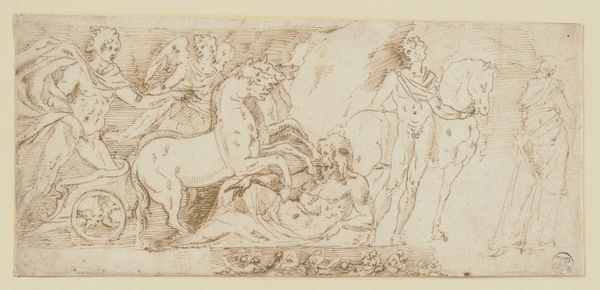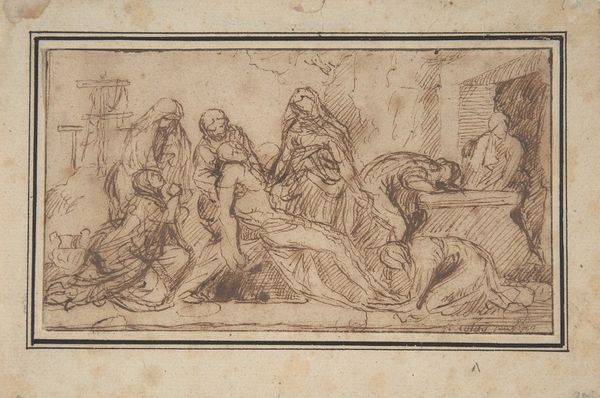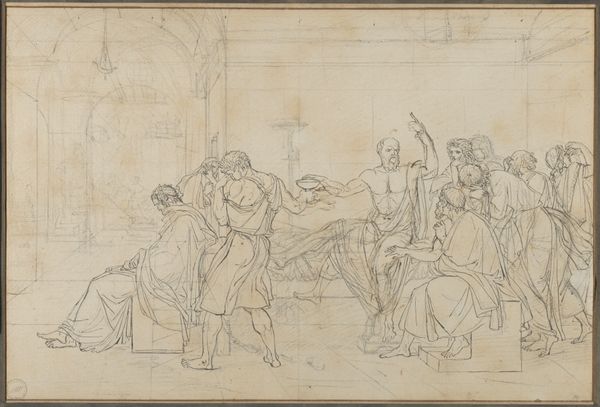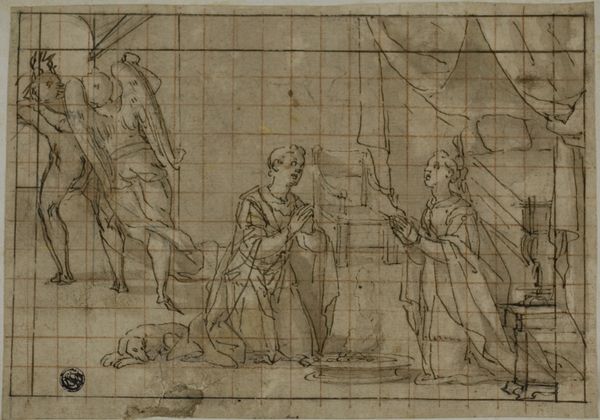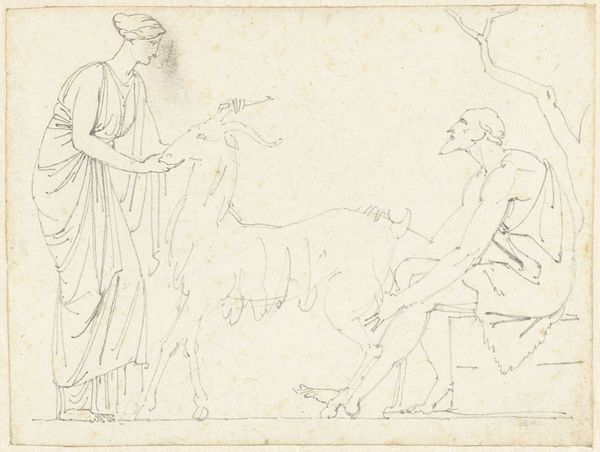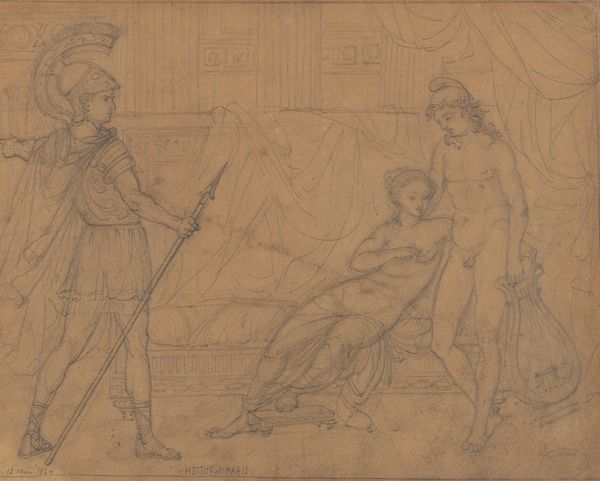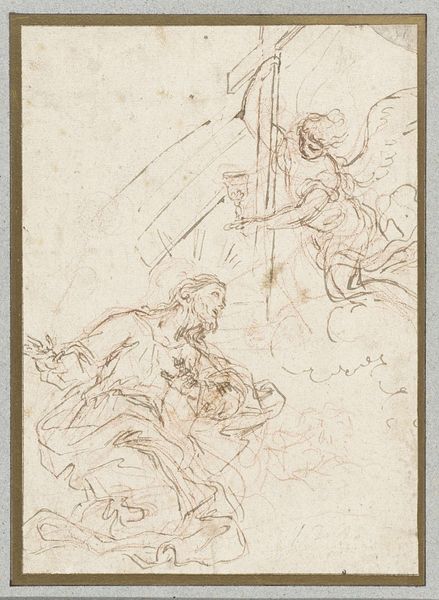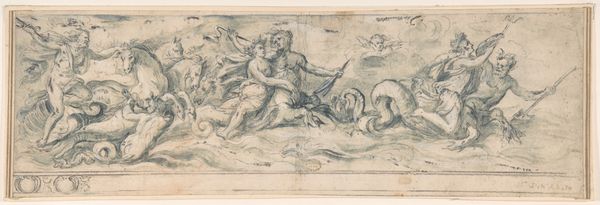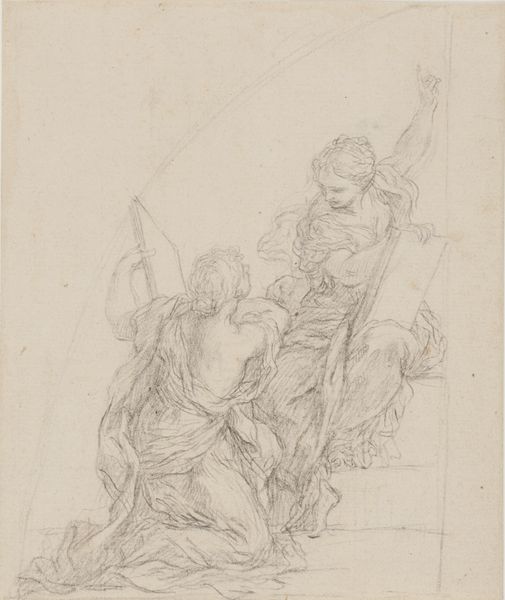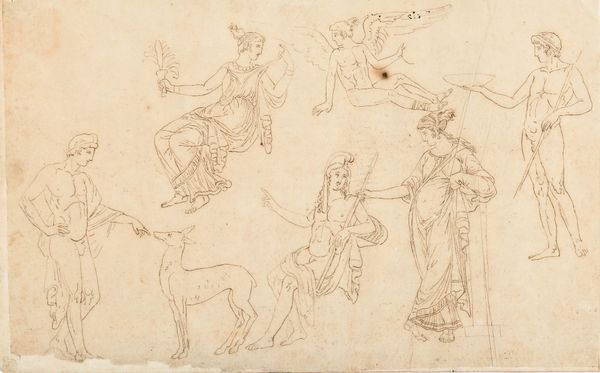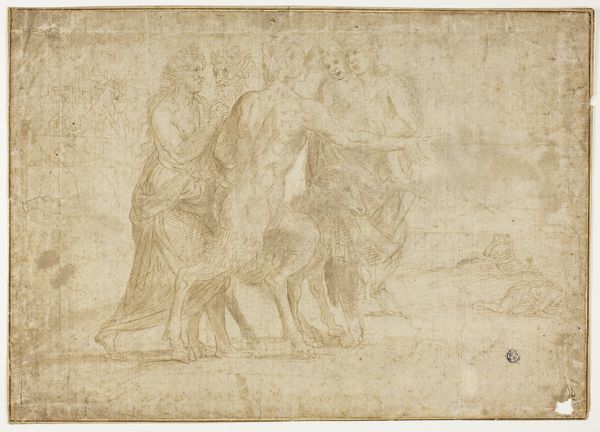
Minerva Presenting Two Portraits to Apollo 1625 - 1655
0:00
0:00
drawing, print, pencil
#
portrait
#
drawing
#
baroque
# print
#
pencil sketch
#
figuration
#
pencil
#
france
#
history-painting
#
academic-art
#
italian-renaissance
Dimensions: 5 9/16 x 8 1/16 in. (14.1 x 20.4 cm)
Copyright: Public Domain
Editor: This is "Minerva Presenting Two Portraits to Apollo," a pencil drawing made sometime between 1625 and 1655 by Eustache Le Sueur. The sketch-like quality makes me think this was perhaps a study for a larger work. What are your initial thoughts? Curator: It's interesting to consider this as a manifestation of artistic labour, isn’t it? A 'preliminary' drawing like this can be so revealing. Notice the grid marks; they speak volumes about the transfer process involved in academic art. This isn't just about divine inspiration, but skilled work. How does the material – pencil on paper – inform our understanding of the final projected piece? Editor: I see what you mean! The grid really exposes the practical side, almost like blueprints. The emphasis on preparation underscores that artmaking isn't spontaneous but constructed. The "preciousness" that we attach to the artwork and artistic persona melts away… Curator: Precisely! And the act of drawing itself was fundamentally tied to knowledge and control, especially in the context of the French academy. Consider also the access to materials; who commissioned this? What determined the quality of paper used? Editor: I suppose it was considered ‘waste material', this preparatory drawing only enabling the final creation? How do you think his Baroque influences factored into the labour aspect? Curator: Baroque art, often commissioned by the Church or aristocracy, frequently obscures the means of production, presenting a finished spectacle of wealth and power. But here, the visible labour embedded in this drawing exposes that illusion. Consider, were there workshop assistants? The distribution of artistic labour is critical to unpacking artistic hierarchy at the time, challenging the Romantic idea of the solitary artist. Editor: That really shifts my perception. I always focused on the narrative elements, but now I realize how important it is to consider this piece in the context of materials, processes, and even workshop economics! Curator: Indeed. This seemingly simple sketch unveils a complex network of labour, value, and social relations deeply embedded in its materiality.
Comments
No comments
Be the first to comment and join the conversation on the ultimate creative platform.

